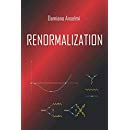Quantum field theory
We investigate the local limits of various classes of unitary, nonlocal quantum field theories. While it is easy to build nonlocal models with well-behaved asymptotics in Euclidean space, the Minkowskian correlation functions typically exhibit singular behaviors. We introduce “asymptotically local” quantum field theory (AL-QFT) as the class that encompasses unitary, nonlocal theories with well-defined local limits in Minkowski spacetime. The target models cannot propagate ghosts, but are allowed to contain purely virtual particles (PVPs). In the bubble diagram, the nonlocal deformation generates PVPs straightforwardly. In the triangle diagram, it does so possibly up to multi-threshold corrections, which may be adjusted by tuning the deformation itself. We build examples of AL-QFTs, including a deformation of quantum gravity with purely virtual particles. AL-QFT can serve various purposes, such as suggesting innovative approaches to off-shell physics, providing an alternative formulation for theories with PVPs, or smoothing out nonanalytic behaviors. We discuss its inherent arbitrariness and the implications for renormalizability.
Quantum gravity is extended to include purely virtual “cloud sectors”, which allow us to define a complete set of point-dependent observables, including a gauge invariant metric and gauge invariant matter fields, and calculate their off-shell correlation functions perturbatively. The ordinary on-shell correlation functions and the $S$ matrix elements are unaffected. Each extra sector is made of a cloud field, its anticommuting partner, a “cloud-fixing” function and a cloud Faddeev-Popov determinant. The additional fields are purely virtual, to ensure that no ghosts propagate. The extension is unitary. In particular, the off-shell, diagrammatic version of the optical theorem holds. The one-loop two-point functions of dressed scalars, vectors and gravitons are calculated. Their absorptive parts are positive, cloud independent and gauge independent, while they are unphysical if non purely virtual clouds are used. We illustrate the differences between our approach to the problem of finding a complete set of observables in quantum gravity and other approaches available in the literature.
Eur. Phys. J. C 83 (2023) 1066 | DOI: 10.1140/epjc/s10052-023-12220-4
Talk given at the Department of Physics and Astronomy of Southampton University, UK, on Nov 16th, 2018
I introduce the concept of fake particle and study how it is used to formulate a consistent theory of quantum gravity. Fakeons arise from a new quantization prescription, alternative to the Feynman one, for the poles of higher-derivative theories, which avoids the problem of ghosts. The fake particles mediate interactions and simulate true particles in many situations. Nevertheless, they are not asymptotic states and cannot be detected directly. The Wick rotation and the S matrix are regionwise analytic and the amplitudes can be calculated in all regions starting from the Euclidean one by means of an unambiguous, but nonanalytic operation. By reconciling renormalizability and unitarity in higher-derivative theories, the models containing both true and fake particles are good candidates to explain quantum gravity. In pole position is the unique theory that is strictly renormalizable. One of the major physical predictions due to the fakeons is the violation of microcausality. I discuss the classical limit of the theory and the acausal corrections to the Einstein equations.
Talk given at the conference
Max Planck Institute for Mathematics in the Sciences, Leipzig
October 04, 2018
I claim that the best correspondence principle for quantum field theory and quantum gravity is made of unitarity, locality and proper renormalizability (which is a refinement of strict renormalizability), combined with fundamental local symmetries and the requirement of having a finite number of fields. Quantum gravity is identified in an essentially unique way. It emerges from a new quantization prescription, which introduces the notion of fake particle, or “fakeon”, and uses it to resolve the long-standing problem of the higher-derivative ghosts. I discuss the major physical prediction of the theory, which is the violation of causality at small distances. The correspondence principle identifies the gauge interactions uniquely in form, but does not predict the gauge group. On the other hand, the matter sector remains almost completely unrestricted.
We discuss the fate of the correspondence principle beyond quantum mechanics, specifically in quantum field theory and quantum gravity, in connection with the intrinsic limitations of the human ability to observe the external world. We conclude that the best correspondence principle is made of unitarity, locality, proper renormalizability (a refinement of strict renormalizability), combined with fundamental local symmetries and the requirement of having a finite number of fields. Quantum gravity is identified in an essentially unique way. The gauge interactions are uniquely identified in form. Instead, the matter sector remains basically unrestricted. The major prediction is the violation of causality at small distances.
OSF preprints | DOI: 10.31219/osf.io/d2nj7
PhilSci 15287 (v1: PhilSci 15048)
Preprints 2018, 2018110213 | DOI: 10.20944/preprints201811.0213.v1
We investigate the background field method with the Batalin-Vilkovisky formalism, to generalize known results, study parametric completeness and achieve a better understanding of several properties. In particular, we study renormalization and gauge dependence to all orders. Switching between the background field approach and the usual approach by means of canonical transformations, we prove parametric completeness without making use of cohomological theorems, namely show that if the starting classical action is sufficiently general all divergences can be subtracted by means of parameter redefinitions and canonical transformations. Our approach applies to renormalizable and non-renormalizable theories that are manifestly free of gauge anomalies and satisfy the following assumptions: the gauge algebra is irreducible and closes off shell, the gauge transformations are linear functions of the fields, and closure is field-independent. Yang-Mills theories and quantum gravity in arbitrary dimensions are included, as well as effective and higher-derivative versions of them, but several other theories, such as supergravity, are left out.
Phys. Rev. D 89 (2014) 045004 | DOI: 10.1103/PhysRevD.89.045004

 Quantum Gravity
Quantum Gravity 


